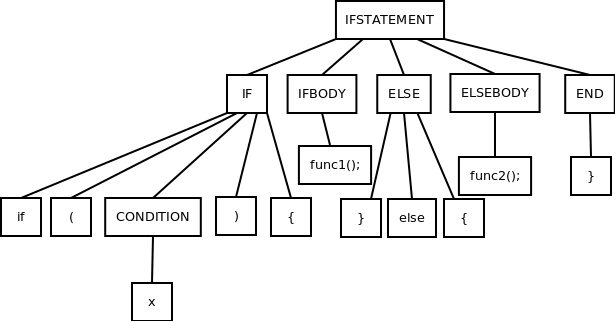Example
Example
Let's say we have the following context-free grammar:
IFSTATEMENT → IF IFBODY ELSE ELSEBODY END
IF → if (CONDITION) {
CONDITION → x | y
IFBODY = func1();
ELSE = } else {
ELSEBODY = func2();
END = }
Σ = {if, (, ), x, y, func1();, "}", else, "{", func2();}
Let's say our input string is:
if (x) { func1(); } else { func2(); }
The leftmost derivation of this string is:
Conversely, the rightmost derivation of this string is:
Now, observe the following parse tree:

If we observe the parse tree and compare it to the leftmost and rightmost derivations, we can see that the tree simultaneously illustrates both derivations.
To see the leftmost derivation within the tree structure, we can read the terminal (leaf) nodes from left to right and observe the parent nodes that represent the corresponding productions. In this case, we always apply the production needed to derive the leftmost terminal node that has not yet been derived.
For the rightmost derivation, we can apply this process in the opposite direction.